#highly accurate depth camera
Explore tagged Tumblr posts
Text
ToF 3D Depth Camera S110D | Cube-eye

The Cube-eye ToF 3D Depth Camera S110D is a high-performance camera that uses Time-of-Flight (ToF) technology to determine the distance between objects in its field of view. This allows the camera to create precise and detailed 3D depth maps of its surroundings.
The S110D features a 100-degree field of vision with a resolution of 640x480 pixels. It can handle frame rates of up to 30 frames per second, making it ideal for real-time applications.
The S110D is also tiny and lightweight, making it easy to integrate into a variety of devices. It is also dust and water resistant, making it ideal for usage in harsh environments.
The S110D has numerous uses in a variety of industries, including:
Robotics: It can be used to help robots navigate and avoid obstacles.
Augmented reality (AR): The S110D can be used to create realistic AR experiences by accurately tracking the position and orientation of objects in the real world.
Machine vision: The S110D can be used to help machines identify and classify objects.
Security: It can be used to create three-dimensional security systems that can detect and track intruders.
Surveying and mapping: The S110D can be used to create accurate and detailed 3D maps of the environment.
ToF 3D Depth Camera S110D Specification:
Type: Board
Operating Range: 0.2 ~ 2m
Illuminator: VCSEL 940nm x 1
Depth Pixel Count: VGA(640x480)
Field of View (H, V): 90°(H) x 68°(V)
Output Data (bit): Amplitude/ Depth Image 10bit
Accuracy: <±1% by Distance
If you are looking for highly accurate depth cameras, you can find them at Cube-eye.
Click here to contact Cube-eye.
View more: ToF 3D Depth Camera S110D
0 notes
Text
Notes on Comic Art #2: To Hatch or Not to Hatch, also some coloring stuff

One of the most influential things I've ever read on the subject of comic art is a piece Jesse Hamm wrote on Alex Toth where he talks about flatpacking.
[I discovered while writing this that Jesse Hamm passed away in 2021. He was a brilliant educator, one of the best in the history of the comics medium, and will be sorely missed.]
In the piece Hamm basically discusses how over-rendering objects usually makes them function worse as comic art. Many other people have discussed how using thicker lines for objects closer to the "camera" is good practice, how colors can seperate shapes and create depth, etc.
The question is, where does cross hatching fit into all of this? Or rather, various methods of adding more detailed rendering to artwork? I'm trying to figure this stuff out as I'm doing layouts for my comic, because I want to know the answers before I start inking the final artwork.
I try/want to have an uncluttered, clean, easily readable art style. I occasionally add hatching to my drawings, because hatching is fun, but I often feel like I've slightly ruined my artwork when I'm finished.
I've decided to look at some of the art that I feel like my own work is trying the hardest to emulate, at least philosophically, to see how other artists "weigh in" on this debate. It's important to remember that inkers embellish artwork [hence the alternate title "embellisher"], and so I'm going to try and find inkers most representative of a given penciller's intentions when applicable.
As I was working on this piece, I read Hamm Tips vol 1.1, and I discovered this diagram, which seems to relate with what I'm going to discuss later:

I think it's accurate to say that my desired approach is Uninflected/Deliberate; I think most people going for a clean and cartoonish look fall into that quadrant. Some people might describe Toth's work as being "clean", and so I should clarify that I'm talking about clean in the spirit of "lines meet neatly".
Some of the artists I'll discuss have lines that fall somewhere between being Inflected and Uninflected, and I think a lot of this comes down to inker approach. I feel like, in spirit, all of these pencillers are Uninflected, but some of the inkers use brushes, which creates a sort of middle ground. Brushes add different weights to a line, whereas crow quill nibs and pens have a uniform width. [The technical term for unweighted inked lines is "dumb line"; I believe this was coined by David Mazzucchelli.]
Let's first look at Adam Warren's work in the Dirty Pair volume Fatal But Not Serious. I'm a huge fan of how this comic looks; the flat, cel animation-style colors are very clean and easy to read. It's a very pleasant look, and I'm surprised more comics don't do this.


There is some hatching here, but it's not "serious" hatching. Just a few lines on cheeks, hands, etc. 98% of the artwork is shapes delinated entirely by a clean line and color. The convention floor panel is able to have a ton of detail without really changing the visual "rules" of the comic. An artist who does things in a more highly rendered way may've, for instance, reduced the crowd to a series of heavily shadowed figures, or colored in a single expressionistic wash to paper over things, etc.
Warren's Magical Drama Queen Roxy used a very similar approach to Fatal But Not Serious:

Let's now look at Rick Mays. I'm not a huge fan of Rick Mays, I've only actual read a single issue of a comic by him, but as I was reading Gen 13 he immediately stood out as being the best artist on that series, aside from Adam Warren himself [speaking only about issues Warren wrote]. It feels very telling that Rick Mays later did the final art for a graphic novel Warren laid out called Livewires.
These are from Gen 13 vol 2 #70:


The biggest difference between this piece has nothing to do with Warren or Mays, and everything to do with the coloring approach. I don't think the coloring here is bad, but the gradient-y colors do create a vastly different visual effect than the cel look I highlighted earlier.
The inking approach feels quite similar between the two artists; while Mays's art takes one or two steps towards realism relative to the Fatal But Not Serious stuff, texture is largely used to the same degree [with the grass and tornado being understandable exceptions]. What's interesting is that this issue has three different credited inkers; Karl Story, Rick Mays, and Jason Martin. I'm assuming this happened for deadline reasons.
I feel like I'm maybe starting to sound a little repetitive, and so I feel like I should share an issue of Gen 13 that I disliked, and then we can move to things that aren't Adam Warren-adjacent. These are from #43 and #44, with pencils by Lee Bermejo and inks by John Nyberg:


I'm not a big fan of this. The borderline chiaroscuro inking makes everything look heavily referenced, labored, and weird, and the "acting" in the comic suffers because of the over-rendered faces. It's a real shame the artwork is like this, because this two-part story is actually quite solid and would be a minor classic with better artwork.
I notice that many newer comic artists [which is to say, people who began their careers during the 90s onwards] put a lot of heavy shadows on figures in a way that feels too slavishly devoted to a certain kind of realism. I say a "certain kind" because the high contrast look of black spots being put onto a figure make the shadows way darker than they'd actually look in real life, so it almost makes the figures look dirty.
Look at comic art from the olden days and figures are largely defined by outlines/color. If a figure in an old comic has a lot of shadow on them, it's for reasons that are obvious and motivated; noir-y venetian blinds stuff, a mysterious villain being obscured, someone being underlit, or having half their face obscured, etc. There's a clear reason shadows are being used in these cases, rather than it being done to add usually unnecessary detail.
Anyways, let's look at Amanda Conner's work. Image on the left is from a Vampirella story called Fantasy Feast, and the image on the right is from Power Girl #12. Texture is used, like on the walls of the bathroom, but sparingly.


Looking at Conner's work in this context makes me realize, I don't think I've ever seen Amanda Conner's stuff colored flat [at least after she fully matured as an artist]. I don't think the more three-dimensional rendering used in any of these panels is bad, but I'm not going to be doing that kind of coloring in my book, and so it's not quite as instructive to me.
That being said, I really love Conner's style. I've noticed that Marvel and DC are increasingly using artists with styles that are broadly similar to Conner's; I've included an example below. Maybe it's because the artist below is too lazy to draw a proper background, but their work feels so much more flavorless than Conner's in comparison. I think it's because the "acting" is not as impressive, and Conner brings a fun-factor that feels completely absent in the page below.

I realize "fun" isn't always the order of the day, but this page doesn't really reflect . . . anything. It's completely bland.
Here's Kirby, who couldn't be bland if he tried. The left image is from the Young Romance collection Fantagraphics put out, and the right is from OMAC. The former is from the 40s, latter is from the 70s. [By the way, the Young Romance image is photographed from my own collection; there's no warping visible because Fantagraphics knows how to design a book].


Looking at these pieces side-by-side really challenges a lot of my assumptions about Kirby's artwork, because in some ways his artwork changed less than I previously thought it did without direct comparisons. There are some things that are more abstract about the OMAC page, like the wiggly shadows. Someone unfamiliar with Kirby might assume these were drawn by two different people, but only because 30-odd years of growth seperate these two pages.
Kirby's style, in my mind, is highly geometric and defined more so by abstract shorthand squiggles than hatching or other forms of rendering, but there actually is a fair amount of hatching on the OMAC page.
However, that OMAC page I believe was inked by Mike Royer, or at least someone using a brush. I noticed that, by sheer coincidence, almost all of the Kirby art from my first post in this series was inked by D. Bruce Barry, who didn't use a brush and also followed Kirby's pencils perhaps more literally than any other inker he ever had. In those images, it's clear that most of the hatching in Kirby's work was added by his inkers.
When Kirby did ink himself [using a brush], his style was oddly clean. He did add in hatching, but it was never particularly dense.
Anyways, I want to close this by including some Jesse Hamm quotes from his instructional PDFs:
-Simplicity is great, but often you need extra texture to seel weirdness.
-Another sign of experience is texture. The pro-level artist has learned to give different textures to grass, hair, tree bark, bushes, etc. Meanwhile, the amateur uses the same one or two shading techniques on EVERYTHING, giving it all a samey feel.
-Open spaces of black or white may be "activated" with a bit of texture. A few pebbles/ripples/etc will spur the mind to fill what's missing.
-We talk often about spotting blacks, but spotting greys (i.e., details/texture) is also crucial to clear compositions.
The lesson in the bit of Hamm writing I most often revisited, the flatpacking post, was that too much texture and rendering can make a comic exhausting to read. But reading more of his work, it turns out he had a more nuanced, texture-inclusive view of things.
What's the lesson here? Discretion.
57 notes
·
View notes
Text










Canon 40mm f2.8 Adapted to my GFX50R
This is a match made in heaven, i believe that this is currently (as of February 18th 2025) the smallest digital medium format combo out there. This set up is close to perfection for me!
With the 40mm adapted to GFX you get the focal equivalent of 32mm (31.6mm with the .79x crop) with the depth of field equivalent of F2.2. Please note that even though the DoF equiv. is f2.2 that doesn’t mean that you’ll be letting in the same amount of light as a lens with a f2.2 aperture.
Corner sharpness is fantastic! F2.8 can get smeary sometimes but when stopped down the IQ is sharp corner to corner. This lens handles the 4:3 sensor excellently! As of lately i haven’t been someone who cares too much about IQ and pixel peeping (which is why im totally fine with adapting these older lenses) but this lens is so incredibly sharp paired with this system that i’m always blown away that you can get this level of detail with a $100 lens.
There are a couple cons with this lens. first one being wide open at f2.8 IQ suffers a bit, i find center sharpness is more than usable but in some situations it can get pretty soft looking. I personally don’t like the out of focus bits on this lens so i usually shoot it stopped down. There’s no weather sealing so you do need to be careful, fortunately the Fringer adapter is weather sealed but i still don’t want to risk frying these electronics. Autofocus is pretty decent considering i’m adapting this to a Contrast based system, it’s definitely on the faster side for adapted lenses and it’s pretty accurate but it’s still very slow compared to modern tech. i feel like this shouldn’t be in the cons sections as it’s more of dig towards the older GFX50R af system but i still wanted to bring it up for those who are curious.
This is a lens that i highly recommend every GFX user who is looking for a cheap, lightweight lens that’s not a native GF lens! If you’re use the older 50 series AF system then you’ll know how to work with this lens. I feel like this combo is something truly special though, you don’t usually see digital medium format cameras this size. This is the closest you can get to a medium format x100, well until fuji drops the GFX100RF.
#blog#review#photo review#camera review#lens review#original photographers#photographers on tumblr#new tumblr#artists on tumblr#photogram#cameras#canon 40mm f2.8#medium format#lookslikefilm#gfx50r#fujifilm#fujifilm gfx50r#fujiframez#fuji x100vi#fuji x100v#point and shoot#120mm film#las vegas photographer#photographer#photography community#tumblr
16 notes
·
View notes
Text
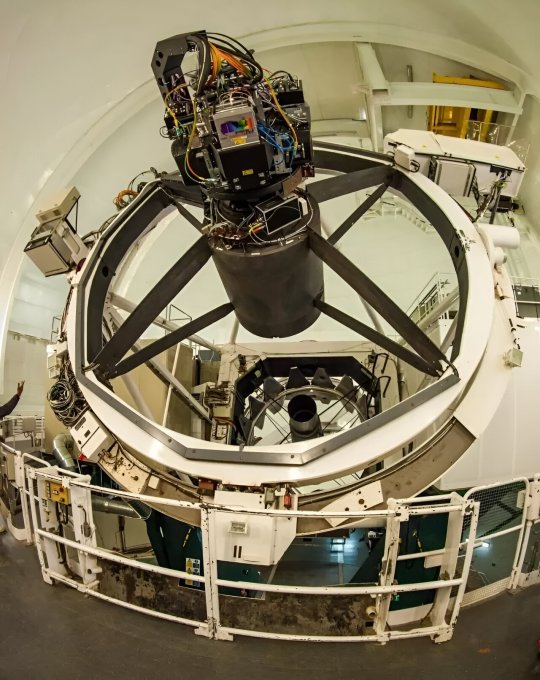
New cosmic distance catalog could unlock the mysteries of universe formation
A new catalog providing information on millions of distant galaxies, which determines their distances with unprecedented precision over a field of view and depth never before explored, has been published today.
The catalog is the result of The Physics of the Accelerating Universe Survey (PAUS), an international collaboration led by the Institute of Space Sciences (ICE-CSIC), dependent on the Ministry of Science, Innovation and Universities (MICIU), which involves 14 institutions across six countries—including the University of Portsmouth.
Collected over 200 nights between 2015 and 2019 using the PAUCam camera on the William Herschel Telescope in La Palma, this catalog is now available on the PAUS website and the CosmoHub web portal.
Covering a vast sky area of 50 square degrees, similar to an area of approximately 250 full moons, the catalog includes data for 1.8 million astronomical objects. These insights will enable astronomers to create more accurate maps to understand how structure forms in the universe and to study dark matter and dark energy.
Enrique Gaztañaga, Director of the PAU Survey and Professor at the University of Portsmouth's Institute of Cosmology and Gravitation, said, "The PAU Survey offers a groundbreaking approach to creating cosmic maps, made possible through the design and development of a novel instrument and a dedicated survey to collect and analyze data in ways never done before. It has been a privilege to collaborate with such a talented and dependable group."
The accelerated expansion of the universe is attributed to dark energy, which constitutes about 70% of the universe, yet its nature remains a mystery. The PAU Survey offers new insights into this enigma, providing an accurate and comprehensive characterization of millions of galaxies up to distances of more than 10 billion light years.
This catalog is a valuable resource for the astronomical community, aiding in the scientific analysis and calibration of other cosmological surveys.
The PAUCam camera was specially designed to accurately measure galaxy distances, enabling the study of the universe's expansion under the influence of dark matter and dark energy.
The project builds on existing deep images from the Canada-France-Hawaii Telescope Lensing Survey (CFHTLenS), carried out with the Canada-France-Hawaii Telescope in Hawaii, and the Kilo-Degree Survey (KiDS) carried out with the European Southern Observatory's VLT Survey Telescope in Chile. By combining these datasets, PAUS has achieved highly accurate distance and time information for deep space objects.
This catalog represents a significant advancement in cosmic research, with its extensive data offering photometric redshift measurements that determine the distances of galaxies as they appeared billions of years ago.
To achieve these measurements, the PAU camera employs 40 filters across different colors, representing narrow bands in the optical spectrum. This technique involves photographing the same field multiple times through various color filters. As objects move away from us, the light they emit experiences a redshift, shifting towards the red end of the spectrum. In astronomy, redshift is crucial for calculating the distance of an object from Earth.
David Navarro-Gironés, Ph.D. student at ICE-CSIC and first author of the paper, said, "The precision in measuring galaxy distances depends on the number of filters you use, as each filter provides different information about the galaxy.
"The great advantage of PAUS is that it combines information from 40 different filters, allowing for highly accurate distance measurements. This level of precision is crucial for the study of the structure of the universe, which in turn requires data from a large number of galaxies."
The release is detailed in two articles published in the Monthly Notices of the Royal Astronomical Society: one measuring distances and another one on calibration of the PAUS data.
In the coming months, the team will also present an ongoing study on galaxy clustering and intrinsic galaxy shape alignments, contributing to a deeper understanding of how our universe formed and evolved.
IMAGE: The William Herschel Telescope in La Palma, Spain. Credit: PAUS team
2 notes
·
View notes
Text
How's That - Jesse Kanda (2013)
youtube
Love this vid and want to break down a few of the pieces that really stood out to me:
Additional mileage from video warps - softbody sims are hard, so a lot of what I love about this video is getting the most mileage out of existing technical investment with small tweaks rather than additional work. In this case, a lightweight video filter thrown on top of 3D sim activates many more forms out of the initial design. This pattern in digital art of taking novel technical forms and running them through novel functions proves incredibly powerful

2. Material swaps - an extremely powerful but simple technique is the way that 3D animation can render the exact scene and camera moves with different materials. It's incredibly alien to lived experience and recalls the complex robo-cam shots of 90s music videos, but is foundationally trivial to 3D animation.
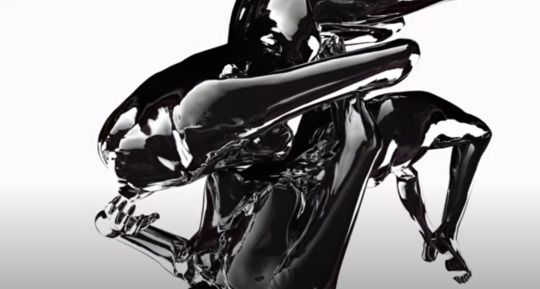

3. Pushing simulation - the most complex effect in the video is the second half, where skeletal forms seem to move underneath the collapsing figure (in tune with the beat no less). It's very possible this could be done physically accurate with a dynamic softbody sim responding to animating figures underneath (and driving that animation with a filtered audio channel). That said, this would melt computers in 2023 so I think there's really only 1-2 shots where this is actually the case and another few where dynamic pressure forces on the softbody (easier to sim due to no dynamic collisions) are continuing that theme. I call this out 1. for the impressive use of technique in 2013 and 2. the more impressive artistic disposition to understand the limitations of this technique and work around it with the above and below mentioned techniques



4. Hard, Strobed, and Dynamic Lighting - an incredibly important technique in Kanda's work in this period (and many videos of this style in general) is the lighting technique
i) hard lighting - creates a highly defined image, which much in the way highly edited editorial photography of the 90s really accentuates the contrast ratio to give the image a very defined form and sell the realism
ii) strobed and dynamic lighting - incredibly high leverage (impact-effort) technique for tying shots to one another and to the underlying track. It costs significantly less to animate a light to the beat than it is to animate new geometry (much the way it is cheaper to strobe live plates rather than pay for new production design). Likewise for the rapid cuts back-and-forth to shots that are used throughout. In particular the light pans in the second half are a great example of artistic depth getting visual mileage out of exploring the way form changes under subtle light variation rather than requiring a new effect

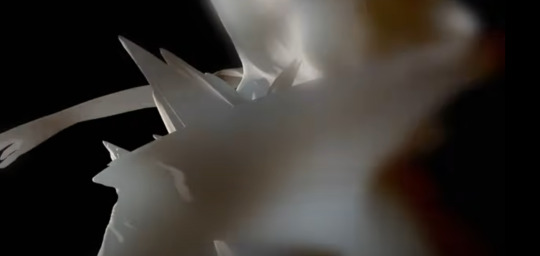


2 notes
·
View notes
Text
The Best ENT Equipment for Hospitals: Essential Tools for Modern ENT Care
Equipping a hospital with the best ENT equipment is crucial to providing comprehensive, precise, and comfortable care for patients with ear, nose, and throat conditions. As ENT diseases are highly prevalent across all age groups, hospitals must invest in advanced, reliable equipment to ensure accurate diagnosis, effective treatment, and improved patient outcomes. This article explores the best ENT equipment for hospitals, their key features, and why quality ENT setups are indispensable in today’s healthcare environment.Best ENT equipment for hospitals
Why investing in the best ENT equipment matters
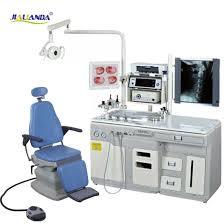
ENT (Ear, Nose, Throat) departments handle a wide range of conditions — from chronic ear infections and sinus diseases to throat cancers and voice disorders. High-quality ENT equipment ensures:
Precise diagnosis: Advanced tools help ENT specialists visualize, test, and identify problems accurately.
Efficient treatment: Reliable instruments reduce procedure time and complications.
Enhanced patient comfort: Modern devices are designed to be minimally invasive and less distressing for patients.
Higher productivity: Durable and easy-to-use equipment improves workflow, allowing hospitals to handle more cases efficiently.
Investing in the best ENT equipment for hospitals also boosts reputation, as patients increasingly seek facilities with state-of-the-art medical technology.
Essential ENT equipment every hospital needs
1. ENT Treatment Units
An ENT treatment unit is the central hub of any ENT clinic or hospital department. It integrates multiple tools such as suction, irrigation, endoscopy, and storage into a single workstation. Features like microscope arms, integrated cameras, and patient-friendly designs make procedures seamless and hygienic.
2. Rigid and Flexible Endoscopes
Endoscopy is fundamental to ENT care. Rigid nasal or laryngeal scopes and flexible nasopharyngoscopes allow direct visualization of the nasal passages, throat, and larynx. The latest models offer HD imaging and compatibility with video systems, providing clear, magnified views for precise diagnosis.
3. Operating Microscopes
High-quality ENT microscopes with LED illumination and multiple magnification levels are essential for ear surgeries like tympanoplasty or mastoidectomy. They provide excellent depth perception, allowing surgeons to operate on delicate ear structures with confidence.
4. Audiometry Equipment
Audiometers are vital for assessing hearing levels. Modern devices support pure-tone audiometry, speech audiometry, and tympanometry. Many systems also include data management software for tracking patient progress over time.
5. Tympanometers
Tympanometry measures middle ear function and is key for diagnosing otitis media, eustachian tube dysfunction, and more. Advanced models offer multi-frequency testing and graphical outputs, aiding quick decision-making.
6. Nasal Endoscopy Camera Systems
A nasal endoscopy camera system captures detailed images and videos during examinations. They are indispensable for documenting findings, patient education, and telemedicine consultations.
7. Electrocautery and Radiofrequency Units
For ENT procedures such as tonsillectomies or nasal turbinate reductions, electrocautery and RF devices provide precise tissue cutting and coagulation, reducing bleeding and promoting faster recovery.
8. Suction and Irrigation Devices
Efficient suction and irrigation systems maintain a clear surgical field, minimize infection risk, and speed up ENT procedures.
Additional specialized ENT equipment hospitals should consider
Stroboscopes: Used for detailed laryngeal assessments, especially in voice disorders.
CO2 Lasers: Provide minimally invasive options for treating tumors or chronic nasal obstruction.
Otoacoustic Emission (OAE) Devices: Essential for newborn hearing screening programs.
Allergy Testing Systems: Many ENT patients suffer from allergic rhinitis, making in-house allergy testing valuable.
Choosing the best ENT equipment for hospitals
When selecting ENT equipment, hospitals should focus on:
Quality & Certification: Equipment should comply with international medical standards (like CE, FDA). Ease of Use: Devices should have intuitive interfaces to minimize staff training time. Service & Support: Look for suppliers offering robust after-sales service and readily available spare parts. Upgradeability: ENT technology evolves rapidly. Choosing systems that allow software or hardware upgrades protects long-term investment. Patient Comfort: Ergonomic designs, quiet operation, and quick testing times make examinations more pleasant.
Benefits of equipping hospitals with top-tier ENT equipment
Better patient outcomes: Accurate diagnosis and minimally invasive treatment lead to quicker recoveries.
Increased case volume: Efficient workflows enable the hospital to serve more patients.
Enhanced reputation: Modern ENT setups attract patients seeking advanced care.
Support for diverse specialties: From pediatric ENT to oncology, robust equipment caters to a broad patient base.
Final thoughts
As ENT care continues to expand with growing awareness of hearing health, allergy management, and throat cancers, hospitals must be equipped with the best ENT equipment to meet this demand. Whether building a new ENT department or upgrading existing facilities, investing in high-quality ENT workstations,Best ENT equipment for hospitals endoscopes, audiometers, and surgical devices ensures your hospital remains a trusted center for comprehensive ENT care.
0 notes
Text
ADAS Sensor Fusion And Data Integration
Introduction

The car industry is undergoing a major shift, fueled by advances in autonomous technology and the desire for safer, more efficient driving experiences. One of the most important components of this change is ADAS Sensor Fusion and Data Integration, which rely largely on sensor fusion and data integration. These technologies constitute the foundation of modern vehicle intelligence, allowing robots to observe and interpret the driving environment with human-like awareness — or better. Combining information from multiple sensors deployed on the vehicle, such as cameras, radar, LiDAR, ultrasonic sensors, and onboard systems like GPS and IMU, to produce a comprehensive and accurate understanding of. This blog examines the significance, technology, difficulties, and potential of these interconnected systems in influencing mobility in the future.
Understanding ADAS Sensor Fusion and Data Integration: Essential Features and Sensor Roles
Vehicles have changed over the last 20 years from being mechanical systems to highly digital platforms with some degree of autonomy. Features of contemporary ADAS include:
Adaptive Cruise Control (ACC): Automatically modifies the vehicle’s speed to maintain safe distances.
Lane-Keeping Assistance (LKA): Assists the driver in maintaining the boundaries of their lane.
Automatic Emergency Braking (AEB): Engages brakes when it detects an impending collision.
The driver is informed of cars in neighbouring lanes using blind-spot monitoring, or BSM.
Parking Assistance: Uses sensor feedback to help steer into confined parking spaces.
Real-time environmental sensing is essential to all of these systems. But no single sensor can provide complete coverage in every situation. Sensor fusion becomes essential at that point.
ADAS Sensor Fusion and Data Integration: What is it?

The process of combining data from different kinds of sensors to create a more comprehensive, accurate, and dependable perceptual model of the surroundings is known as sensor fusion. By leveraging each sensor’s advantages and minimizing its disadvantages, it helps ADAS to get beyond the constraints of individual sensors.
For example:
Although they provide sharp images, cameras are sensitive to illumination.
Radar lacks clear pictures, yet it can detect objects in bad weather.
LiDAR provides accurate 3D mapping, although it is not very effective when it is raining or snowing a lot.
Although they work well at close range, ultrasonic sensors are not appropriate for high-speed detection.
The ADAS can create a reliable and fault-tolerant model of the environment around the car by combining these inputs.
Types of Sensors and Their Functions in ADAS
Let’s examine the main ADAS sensors and see how they contribute to data fusion:
1. Cameras are mostly used for object recognition and classification.
Examples of Use:
Lane recognition
Recognition of traffic signs
Identification of pedestrians and vehicles
Pros: Detailed item classification, color recognition, and high-resolution imaging. Cons: Subject to bad weather, glare, and inadequate illumination.
2. Radar (Radio Ranging and Detection)
The primary goal is to detect objects using radio waves. Examples of Use:
Cruise control that adapts
Avoiding collisions
Measuring distance and speed
pros: Works effectively in rain, fog, and darkness. Cons: Unable to accurately distinguish between different object shapes.
3. Light Detection and Ranging, or LiDAR
The main purpose is to map 3D space with laser beams. Examples of Use:
Identifying obstacles
Modelling the environment
Self-driving cars
Pros: Excellent spatial resolution and depth accuracy. Cons: Costly; in fog, rain, or snow, performance degrades.
4. Sensors that use ultrasonic waves
To begin with, the primary goal is to locate distant objects using sound waves. Examples of Use:
Help with parking
Blind spot identification
Alerts for proximity in slow traffic
Pros: Cheap and short-range effective. Cons: Ineffective over longer distances or at high speeds.
The Sensor Fusion Mechanisms

Depending on the architecture and application requirements, there are various system levels at which sensor fusion can be implemented. These include perception-level, decision-level, and data-level fusion, each offering distinct advantages and trade-offs.
1. Raw Data (Low-Level) Combination
combines sensor data in its raw form before pre-processing. provides excellent accuracy but requires a lot of processing power.
2. Mid-Level (Level of Features) Combination
Before fusion, data is processed into features (distances, edges, etc.). strikes a balance between resource usage and performance.
3. High-Level (Level of Decision Making) Combination
combines data or judgments that have already been interpreted. Easier to implement but may reduce system responsiveness. In order to provide a cohesive picture of the environment, the fusion layer must process massive streams of data in real time. To achieve this, it must effectively remove inconsistencies, filter out noise, and resolve sensor conflicts.
4. Connectivity with Additional Vehicle Data Sources
Sensor fusion encompasses more than just physical sensors. Additionally, ADAS systems interface with: GPS: Offers accurate location information. The IMU (Inertial Measurement Unit) tracks the vehicle’s orientation and motion using accelerometers and gyroscopes. Vehicle-to-Everything, or V2X, communication exchanges data between automobiles and infrastructure, such as traffic lights and intelligent road signs. Moreover, this wider data integration enables better route planning, enhanced contextual awareness, and anticipatory responses — all of which are essential for achieving Level 3+ autonomy.
Benefits of ADAS Sensor Integration and Fusion
1.Increased Redundancy and Safety
Even if one sensor malfunctions or gives inaccurate data, ADAS maintains performance by utilizing several data points.
2. Better Sensation of the Environment
A larger range of items and situations, such as young toddlers next to a curb or rapidly approaching motorcycles in blind areas, can be more precisely detected by combined sensors.
3. Increased Dependability of the System
As a result of combining data from multiple sources, fusion reduces false positives and negatives in object identification. Consequently, this improvement enhances decision-making and facilitates more seamless interventions.
4. The Basis for Complete Independence
To make judgments without human intervention, Level 4 and 5 autonomous cars mostly rely on extensive, fused information.
Challenges in Implementing ADAS Sensor Fusion

Notwithstanding the benefits, incorporating sensor fusion systems comes with several financial and technological challenges:
1. Complexity of computation
High-speed processors and reliable software are needed for real-time fusion in order to handle data from up to thirty or more sensors. Algorithms have to strike a compromise between power consumption, accuracy, and latency.
2. Adjustment and Harmonization
To ensure reliable performance, sensors need to be time-synchronized and accurately calibrated. Otherwise, any misalignment can compromise system judgments by causing inaccurate data fusion.
3. Expensive development
As software development, computation platforms, and sensors collectively raise the overall cost of vehicles, OEMs must, in turn, capitalize on advancements in safety and consumer value to effectively justify and support these expenses.
4. Bandwidth and Data Storage
Since it takes a lot of resources to store and transmit gigabytes of sensor data every minute, effective data management techniques are therefore essential to ensure efficiency and scalability.
Prospects for ADAS Sensor Fusion and Data Integration
Developments in the following areas will influence ADAS sensor fusion in the future:
1. Machine learning and artificial intelligence
In dynamic situations, researchers are expected to increasingly utilize deep learning models to interpret fused data. This is because such models offer greater accuracy and flexibility, making them well-suited for complex and rapidly changing environments.
2. Computing at the Edge
Edge AI processors are becoming more popular in ADAS platforms because they enable real-time decision-making without requiring cloud connectivity.
3. Innovation in Sensors
With the ongoing development of more compact, power-efficient, and reasonably priced LiDAR and radar systems, mid-range vehicles are increasingly gaining access to Level 2+ technologies. Consequently, we expect this trend to accelerate the democratization of advanced driver assistance features.
4. Standards for Safety and Regulation
To ensure safety and interoperability, regulatory organizations are now establishing uniform test procedures and data handling standards for ADAS Sensor Fusion and Data Integration systems. As a result, compliance with these standards will significantly accelerate mass adoption.
Conclusion
ADAS Sensor Fusion and Data Integration represent a significant advancement in the development of intelligent, autonomous, and secure automobiles. Modern ADAS architectures provide improved situational awareness, redundancy, and perception by combining data from several sensor types and onboard devices. These features transform our understanding of mobility and set the stage for completely autonomous driving. Sensor fusion will develop further, become more affordable, and be included into standard car platforms as the industry develops. With our state-of-the-art offerings in Vehicle Control Units (VCUs), CAN Displays, CAN Keypads, E/E Software Development Engineering Staffing Service at Dorleco are honored to help shape this future.
#ADAS#SensorFusion#AutonomousVehicles#AutomotiveTechnology#EV#VCU#CANKeypad#CANDisplay#Dorleco#EngineeringInnovation#SmartMobility#FutureOfDriving
0 notes
Text
9 Mobile App Testing Strategies for 2025

Pre-requisites: The Right Test Environment
Before initiating mobile app testing, setting up a robust test environment is crucial. This includes configuring device OS versions, screen sizes, RAM, battery levels, and user permission profiles. Real-world testing conditions ensure accurate bug identification and better user experience simulations. The right test environment eliminates inconsistent test results caused by mismatched configurations. QA teams should establish environments that reflect diverse user conditions to ensure coverage. With Genqe.ai, teams can simulate multiple device environments efficiently, creating scalable and reusable configurations that mirror real user conditions without the need to manage each environment manually.
Emulators and Simulators
Emulators and simulators are essential for the early stages of testing mobile apps. Emulators replicate Android environments, while simulators mimic iOS behavior, enabling cost-effective testing without real devices. These tools are ideal for UI verification, initial regression tests, and layout assessments. However, they fall short when testing hardware functions like GPS, camera, or sensors. Genqe.ai leverages emulator support with AI-driven visual validation to ensure layout integrity. While not a replacement for real devices, emulators and simulators, when paired with Genqe, offer rapid feedback loops for developers, accelerating development cycles with less hardware dependency.
Real Devices
Testing on real devices is critical for validating actual user experiences. Real devices help detect hardware-specific bugs, ensure accurate gesture recognition, and verify UI elements’ true behavior. These tests uncover issues that emulators can’t, such as screen flickering, battery drainage, and overheating. Real-world touch, swipe, camera, GPS, and network behaviors must be validated. Genqe.ai integrates real-device testing into its automation suite, enabling testers to run intelligent, self-healing scripts on multiple devices simultaneously. This ensures consistency, reliability, and in-depth coverage. Testing on a diverse set of physical devices guarantees your app performs seamlessly in real-life usage scenarios.
Device Clouds
Device clouds are virtual pools of real mobile devices accessible over the internet. These platforms offer scalable access to hundreds of devices with varied OS versions, screen resolutions, and manufacturers. Instead of investing in physical hardware, teams can leverage device clouds to test across a wide range of devices. Genqe.ai seamlessly integrates with major cloud testing providers, allowing for parallel execution of automated test cases across multiple devices. This improves test efficiency and helps identify device-specific bugs. Using device clouds also supports continuous integration pipelines, enabling end-to-end automated testing without physical setup or maintenance overhead.
Types of Applications
The testing strategy must align with the application type — native, web, or hybrid. Native apps are platform-specific and require deep testing into OS integrations. Web apps need browser compatibility testing, while hybrid apps combine native and web components, demanding a mixed approach. Each type comes with its own set of challenges and test scenarios. Genqe.ai supports intelligent automation for all three types, adapting test scripts based on the application architecture. This dynamic adjustment ensures effective coverage. Whether you’re testing complex native gestures or validating hybrid web views, Genqe’s AI ensures optimal test execution across all app types.
9 Highly Effective Mobile App Testing Strategies
1. Early QA Involvement
Integrating QA from the beginning of the software development life cycle saves time, reduces bugs, and improves product quality. Early QA enables better requirement analysis, risk identification, and test case design before development is complete. This shift-left approach minimizes cost by catching defects early. Genqe.ai empowers teams with collaborative tools that generate automated test scenarios during the design phase. Early test coverage through Genqe’s platform ensures thorough validation of user stories and prevents last-minute surprises. Involving QA early not only enhances product stability but also supports Agile and DevOps models with faster delivery and feedback loops.
2. Cross-Platform Testing
Cross-platform testing ensures the app performs consistently on Android, iOS, and various device models. With users distributed across platforms, maintaining feature parity and visual consistency is essential. Each platform has different behaviors, gestures, and UI constraints. Genqe.ai uses intelligent test mapping to run a single set of automated tests across platforms, reducing duplication of effort. It validates layout changes, OS-specific functionality, and device behavior under one intelligent test layer. This enables faster releases with high-quality assurance. Whether you build native or hybrid apps, Genqe ensures that your app performs smoothly across all target platforms.
3. Feature Functionality
Testing core functionality verifies that features perform as intended under different conditions. This includes buttons, login forms, push notifications, API responses, and third-party service integrations. Bugs in these areas directly impact user satisfaction and app ratings. Genqe.ai creates smart test scenarios for business-critical features, focusing on areas with the highest user impact. It prioritizes features based on usage patterns and detects regression risks with each release. Feature testing with Genqe includes automated UI interaction and real-time backend validation, ensuring robust performance and faster detection of logical errors before the app reaches end users.
4. Front-End Testing
Front-end testing involves validating UI/UX components, animations, gestures, fonts, and layout consistency. It ensures that the app is visually appealing and responsive across various screen sizes. UI glitches can lead to poor usability and app abandonment. Genqe.ai uses AI-powered visual testing to detect changes in layout, broken elements, and rendering issues that are often missed in manual checks. Its visual regression engine compares snapshots across devices, ensuring pixel-perfect quality. Front-end testing is vital for retaining users, and Genqe ensures your app looks and behaves as designed, whether it’s running on a tablet, phone, or foldable device.
Back-End Testing
Behind every seamless mobile experience is a robust backend. Testing the backend involves verifying APIs, server logic, data storage, response time, and integration with cloud services. It ensures that the data received by the app is accurate, timely, and secure. Genqe.ai integrates backend testing with automated API validations, simulating real user interactions and validating data flows. It checks for broken endpoints, slow responses, and failed connections. With Genqe, back-end issues are flagged early, and test results are logged for actionable insights. Reliable backend testing ensures your app works flawlessly — even under high load and multiple concurrent users.
5. Security Testing
Security testing safeguards user data, prevents unauthorized access, and ensures compliance with privacy regulations like GDPR. It involves testing for encryption, secure login, session management, and data leaks. Mobile apps are frequent targets for hackers due to sensitive user data. Genqe.ai incorporates automated security scanning into test pipelines, identifying vulnerabilities like SQL injections, insecure APIs, and permission misconfigurations. Genqe ensures security by generating compliance-aware test cases that validate data encryption and secure communications. Building trust with users begins with secure apps, and Genqe makes security testing a proactive and automated process integrated into every release cycle.
6. Multiple Network Compatibility
Users access apps on various networks — Wi-Fi, 3G, 4G, 5G — and your app must handle each seamlessly. Network compatibility testing ensures the app remains stable during fluctuations, interruptions, and transitions between networks. It also includes testing offline features and sync behavior. Genqe.ai simulates real-world network conditions, allowing testers to automate scenarios like poor signal strength, switching between networks, or temporary disconnection. This enables better performance optimization and error recovery. Ensuring your app handles all network conditions gracefully is crucial for global user adoption, and Genqe delivers automated tools to validate this across multiple network layers.
7. Storage Management
Storage testing evaluates how an app handles local data and reacts to low-memory conditions. Issues like cache overload, improper memory cleanup, or large downloads can crash apps or slow them down. Testing should ensure that the app minimizes storage use and handles full-device storage gracefully. Genqe.ai creates scenarios where the device’s available space is restricted, validating app stability under low-memory conditions. It also checks file deletion, data retention, and sync integrity. Proper storage handling improves performance, battery life, and user satisfaction. Genqe automates this process, helping teams identify and fix issues that affect app longevity.
8. Data To and From the App
This strategy ensures the integrity, security, and accuracy of data flow between the app and backend systems. Testing includes input validation, data sync, offline storage, and multi-device consistency. Any errors in data processing can affect the user experience and cause major trust issues. Genqe.ai tests all input/output paths using intelligent data generators, negative testing, and validation logic. It simulates edge cases to ensure data is not lost during interruptions, errors, or network failures. Whether sending a form or syncing cloud files, Genqe ensures that every data transaction is tested, safe, and stable.
9. Application Flow
Application flow testing assesses the user’s journey through the app, from login to exit. It ensures seamless navigation, correct screen transitions, error handling, and consistent state retention. Poor application flow leads to confusion, frustration, and increased bounce rates. Genqe.ai analyzes actual user paths and uses machine learning to prioritize high-traffic flows. It auto-generates test scenarios for real-world navigation sequences and validates edge-case transitions. By continuously monitoring app flow quality, Genqe enhances the overall UX. It ensures that users never encounter broken navigation, dead links, or confusing steps — ultimately boosting retention and engagement.
Conclusion
The landscape of mobile app testing in 2025 demands agility, precision, and smart automation. By implementing the above strategies — early QA involvement, cross-platform and network testing, security validation, and more — development teams can significantly boost the quality and reliability of their apps.
Genqe.ai emerges as a vital partner in this journey. With its advanced AI-powered automation, cross-platform compatibility, and smart test generation features, Genqe streamlines mobile app testing, reduces manual effort, and accelerates release cycles.
As mobile technologies evolve, staying ahead requires not just testing harder — but testing smarter. And Genqe.ai is the way forward.
0 notes
Text
Surveying With Bathymetric: Explore The Benefits | Epitome
Bathymetric surveying is the key to exploring and understanding underwater landscapes. By measuring water depth and mapping the seafloor, this scientific discipline supports safe navigation, marine research, infrastructure development, and environmental protection. As technology evolves, bathymetric surveys have become faster, more precise, and indispensable for industries that rely on accurate underwater data.
Why Bathymetric Surveys Matter
From ensuring maritime safety to preserving marine ecosystems, bathymetric data is crucial for multiple applications:
Safe Shipping & Navigation – Accurate depth charts prevent shipwrecks by identifying shallow zones, submerged rocks, and other hazards.
Offshore Energy Projects – Wind farms, oil platforms, and subsea cables require detailed seabed mapping for stable installation.
Coastal & Flood Management – Governments use bathymetry to predict storm surges, plan flood defenses, and manage sediment buildup.
Scientific Research – Marine biologists and geologists study underwater topography to explore habitats, tectonic activity, and climate change impacts.
Without high-quality bathymetric surveys, underwater operations would be far riskier and less efficient.
Modern Bathymetric Surveying Techniques
Gone are the days of manual lead-line measurements—today’s bathymetric surveys use cutting-edge technology for unmatched precision:
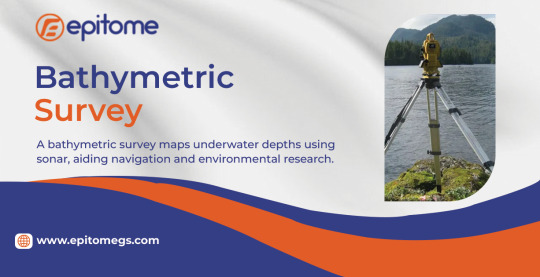
Multibeam Sonar Systems (MBES) MBES emits hundreds of sound beams in a fan-shaped pattern, covering wide swaths of the seafloor. By measuring how long it takes for sound waves to bounce back, these systems generate highly detailed 3D maps.
Side-Scan Sonar (SSS) Unlike MBES, which measures depth, side-scan sonar creates high-resolution images of the seabed, revealing shipwrecks, pipelines, and geological formations.
LiDAR Bathymetry Using laser pulses, airborne LiDAR systems penetrate shallow waters (up to 50m deep) to map coastlines and near-shore zones quickly.
Autonomous Underwater Vehicles (AUVs) Equipped with sonar and cameras, AUVs conduct deep-sea surveys in areas too dangerous or remote for manned vessels.
Satellite-Derived Bathymetry (SDB) Satellites with specialized sensors estimate water depth by analyzing light penetration, providing broad-scale maps where traditional surveys are impractical.
Challenges in Bathymetric Surveying
Despite technological advancements, bathymetric surveys still face obstacles:
Deep Ocean Complexity – The extreme pressure and darkness of deep-sea environments make data collection difficult.
Water Clarity Issues – Murky or turbulent waters can distort sonar and LiDAR readings.
Cost & Accessibility – High-resolution surveys require expensive equipment and skilled operators.
However, innovations like AI-powered data processing and improved sensor technology are overcoming these challenges.
The Future of Bathymetric Mapping
With over 80% of the world’s oceans still unmapped, bathymetric surveying remains a frontier of exploration. Emerging trends include:
AI & Machine Learning – Faster data interpretation and automated anomaly detection.
Real-Time 3D Mapping – Instant seabed visualization for dynamic decision-making.
Global Collaboration – Initiatives like the Seabed 2030 Project aim to map the entire ocean floor by 2030.
Conclusion
Bathymetric surveying is more than just measuring depth—it’s about unlocking the mysteries of underwater worlds. As technology advances, our ability to explore, navigate, and protect marine environments will only improve. Whether for shipping, science, or sustainable development, bathymetry remains an essential tool for understanding our planet’s last great unexplored frontier.
0 notes
Text
Tof 3D Depth Camera I200for Capturing Accurate 3D Depth Data | Cube-eye
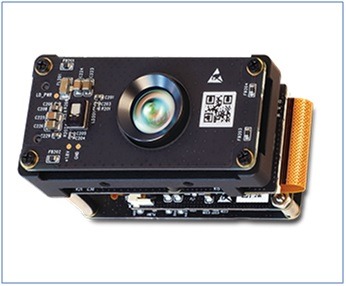
The Cube-eye ToF 3D Depth Camera I200 is a high-performance option for capturing accurate 3D depth data, especially in outdoor environments. Here's a breakdown of its key features:
Strengths:
Sunlight robustness: Unlike many ToF cameras, the I200 performs well even in bright sunlight, making it ideal for outdoor applications like obstacle avoidance in drones and robots.
Long-range precision: It boasts a detection range of up to 7 meters indoors and 5 meters outdoors, allowing for accurate depth perception at a distance.
Compact size: The I200 is small and lightweight, enabling easy integration into various devices.
Specifications:
Operating Range: 0.25 ~ 7.0m
Illuminator: VCSEL 940nm, 4W x 1ea
Depth Pixel Count: VGA (640 X 480)
Field of View (H, V): 90° (H) X 68°(V)
Output Data (bit): Depth / Amplitude / Point Cloud
Accuracy: <±1% by distance
Applications:
Robotics and automation: The I200's strength in sunlight and long-range make it suitable for tasks like object manipulation and navigation in outdoor environments.
Security systems: With its precise depth data, the I200 can be used for intrusion detection and perimeter security.
Industrial automation: It can be employed for tasks like quality control and object measurement in factories.
Augmented reality (AR): The I200's depth data can be used to create more realistic and interactive AR experiences.
Overall, the Cube-eye ToF 3D Depth Camera I200 is a versatile tool for applications requiring accurate 3D depth data, particularly in outdoor settings.
If you are looking for highly accurate depth cameras, you can find them at Cube-eye.
Click here to contact Cube-eye.
View more: Tof 3D Depth Camera I200 for Capturing Accurate 3D Depth Data
※meerecompany is scheduled to participate in COMMUNICASIA 2024 at May 2024. Check below for more details.
- Title: COMMUNICASIA 2024
- Place: Singapore Expo
- Date: 29 - 31 May 2024
- COMMUNICASIA Site: https://asiatechxsg.com/communicasia/
- Apply for participation: https://asiatechxsg.com/registration/
0 notes
Text
What advanced techniques do dislocated shoulder surgeons in Ghaziabad use for shoulder stabilization?
A DISLOCATED SHOULDER SURGEON IN GHAZIABAD employs various advanced techniques to treat shoulder instability, a condition that often results from recurrent shoulder dislocations. The shoulder joint is the most mobile joint in the human body, which also makes it one of the most vulnerable to dislocation. When this occurs repeatedly or the shoulder becomes unstable, surgical intervention is often necessary.
In Ghaziabad, especially at top facilities like Amicare Hospital, expert orthopedic surgeons use cutting-edge surgical and non-surgical techniques to stabilize the shoulder, reduce pain, and restore function. Here is an in-depth look at the most advanced techniques used by a DISLOCATED SHOULDER SURGEON IN GHAZIABAD:
1. Arthroscopic Bankart Repair
One of the most common procedures performed by a DISLOCATED SHOULDER SURGEON IN GHAZIABAD is the arthroscopic Bankart repair. This is a minimally invasive procedure that involves the reattachment of the torn labrum (a ring of cartilage) to the shoulder socket using tiny anchors and sutures. It’s done using an arthroscope—a small camera that allows the surgeon to view the inside of the joint without making a large incision.
Benefits:
Faster recovery time
Less postoperative pain
Minimal scarring
Lower infection risk
This technique is widely used at Amicare Hospital, where surgeons are trained in the latest arthroscopic procedures for shoulder stabilization.
2. Latarjet Procedure
When there is significant bone loss in the shoulder socket, the Latarjet procedure is often the most effective option. This technique involves transferring a piece of bone (usually from the scapula) to the front of the socket to prevent future dislocations.
A skilled DISLOCATED SHOULDER SURGEON IN GHAZIABAD will recommend this when traditional soft-tissue repairs are insufficient. At Amicare Hospital, this procedure is performed with precision and a focus on long-term shoulder function.
3. Remplissage Technique
Sometimes, a shoulder dislocation creates a dent or “Hill-Sachs lesion” in the head of the humerus. The Remplissage technique, often combined with Bankart repair, helps fill this defect and prevent the shoulder from slipping out again.
Orthopedic specialists at Amicare Hospital use this technique for patients with engaging Hill-Sachs lesions, ensuring the shoulder remains stable after surgery.
4. 3D Preoperative Planning and Imaging
A DISLOCATED SHOULDER SURGEON IN GHAZIABAD today often uses 3D imaging and planning software to accurately assess the anatomy and damage to the shoulder. This enables personalized surgical planning for each patient.
At Amicare Hospital, advanced MRI and CT scan technologies are used alongside 3D software, giving the surgeon a precise understanding of the injury before making the first incision.
5. Biological Augmentation
For certain complex or recurring shoulder dislocations, surgeons may use biological augmentation techniques. This involves the use of platelet-rich plasma (PRP) or stem cell therapy to support healing and reduce inflammation.
While not always required, the DISLOCATED SHOULDER SURGEON IN GHAZIABAD at Amicare Hospital may recommend it for athletes or those needing faster tissue healing.
About Amicare Hospital: The Best Place to Find a Dislocated Shoulder Surgeon in Ghaziabad
When looking for a reliable and experienced DISLOCATED SHOULDER SURGEON IN GHAZIABAD, Amicare Hospital stands out as one of the most trusted names in orthopedic and trauma care. Here's why:
1. Specialized Orthopedic Department
Amicare Hospital houses a state-of-the-art orthopedic department with highly qualified and experienced surgeons who specialize in joint injuries, including dislocations, fractures, and ligament tears. Whether you're dealing with an acute injury or chronic instability, the team is equipped to offer both surgical and non-surgical solutions.
2. Expert Team of Surgeons
The hospital is home to some of the best DISLOCATED SHOULDER SURGEONs IN GHAZIABAD, trained in leading institutions and experienced in handling complex shoulder surgeries. They are skilled in both arthroscopic and open procedures.
3. Emergency and Trauma Care
Shoulder dislocations often occur due to trauma—falls, accidents, or sports injuries. Amicare Hospital has a 24/7 trauma care unit that ensures immediate attention and intervention. If you suffer a sudden shoulder dislocation, their emergency team can reduce the dislocation and initiate timely surgical care if required.
4. Rehabilitation and Physiotherapy
Post-surgery rehabilitation is key to a successful recovery. At Amicare, a personalized rehabilitation plan is crafted for every patient. Their in-house physiotherapists guide patients through exercises that restore mobility, strength, and joint function.
5. Affordable and Transparent Pricing
Many patients worry about the cost of shoulder surgery. At Amicare Hospital, pricing is transparent and affordable, making it easier for people from all walks of life to access quality care. They also accept major insurance plans, easing the financial burden of treatment.
6. Patient-Centric Approach
Patient satisfaction is a top priority at Amicare. The hospital offers personalized care, regular follow-ups, and educational support to help patients and families understand their treatment plans.
Conclusion
In conclusion, advanced shoulder stabilization techniques used by a DISLOCATED SHOULDER SURGEON IN GHAZIABAD include arthroscopic Bankart repair, the Latarjet procedure, the Remplissage technique, and the use of modern imaging and biological therapy. These innovative approaches significantly enhance the chances of a full recovery and reduce the risk of future dislocations.
If you're looking for the most reliable and experienced DISLOCATED SHOULDER SURGEON IN GHAZIABAD, Amicare Hospital is the top choice. From diagnosis to surgery and rehabilitation, Amicare provides world-class care backed by expert surgeons, modern technology, and compassionate service.
Your shoulder health is important. Don’t ignore recurring dislocations or chronic shoulder instability. Consult a specialist at Amicare Hospital today and take the first step toward a pain-free, active life.
0 notes
Text
Best Detective Agency in Delhi | Private Detectives in India

Introduction to Premier Detective Services in Delhi
In a bustling metropolis like Delhi, where personal and corporate challenges are diverse and complex, the need for professional detective services is greater than ever. At our agency, we pride ourselves on being the best detective agency in Delhi, offering unmatched expertise in both personal investigations and corporate intelligence. Our team consists of highly trained private detectives in India, equipped with state-of-the-art surveillance tools and an unwavering commitment to confidentiality and results.
Why Choose Our Detective Agency in Delhi
Our credibility is built on a foundation of trust, discretion, and verified results. We are not just another name in the list of detective agencies; we are trailblazers in investigative excellence, known for solving the most complex cases with absolute professionalism.
Experienced Investigators: Each member of our team has undergone rigorous training and has years of field experience in private and corporate investigations.
Advanced Technology: We use cutting-edge surveillance and tracking tools to gather accurate evidence.
Legal and Ethical Standards: All our operations are conducted within the legal framework of India.
Pan-India Network: While based in Delhi, our network spans across India, enabling us to operate nationwide.
Comprehensive Personal Investigation Services
Matrimonial Investigations (Pre & Post)
Marriage is a lifetime commitment, and we ensure you step into it with complete clarity. Our pre-matrimonial investigations include background checks, financial status, character verification, and more. Similarly, our post-matrimonial services focus on suspicious behavior, extramarital affairs, and more.
Loyalty Test Investigations
Suspecting a partner's fidelity can be emotionally devastating. Our discreet loyalty tests are designed to bring the truth to light using subtle yet effective surveillance techniques.
Divorce Case Proofs & Alimony Support
Legal proceedings often require solid evidence. We assist clients in collecting legally admissible proof to support their claims in divorce and alimony cases.
Missing Person Investigations
Whether it's a missing loved one or a person deliberately evading contact, our investigators excel in tracing and locating missing individuals across India using data forensics and on-ground intelligence.
Specialized Corporate Investigation Services
Employee Background Verification
For any organization, employees are assets. We help companies recruit responsibly by conducting in-depth background checks, including criminal records, educational verification, and previous employment history.
Corporate Espionage Detection
In the fiercely competitive business landscape, corporate espionage is a growing threat. Our agency specializes in identifying information leaks, bugging devices, and other security loopholes that could compromise your business.
Due Diligence and Asset Verification
Before mergers, acquisitions, or financial deals, we provide comprehensive due diligence reports. These include financial standings, litigation history, asset ownership, and creditworthiness.
Insurance Claim Investigations
We assist insurance companies and individuals in verifying fraudulent claims by conducting surveillance, collecting photographic evidence, and compiling investigative reports.
Technology-Driven Investigations
Our operations are powered by modern-day technology, including:
GPS Tracking Systems
Hidden Cameras
Cyber Forensics
Voice and Video Surveillance
Digital Footprint Analysis
These tools allow us to gather indisputable evidence that stands up in any legal or personal scrutiny.
Client Confidentiality and Trust
Confidentiality is our top priority. Every case is handled with utmost discretion, ensuring that sensitive information never leaks or reaches unintended hands. Our non-disclosure agreements and internal policies guarantee 100% confidentiality.
Success Stories That Speak Volumes
Our portfolio includes hundreds of successfully resolved cases ranging from marital disputes to multi-crore corporate frauds. Client testimonials consistently highlight our ability to deliver results quickly, discreetly, and ethically.
“Their team helped me uncover crucial evidence that no one else could. I regained control of my life, thanks to their unmatched dedication.” — A satisfied client.
How to Hire the Best Private Detective in Delhi
Getting started with us is simple:
Initial Consultation: Book a confidential consultation to discuss your case.
Case Evaluation: Our experts analyze the situation and recommend an investigative approach.
Action Plan: We deploy a custom strategy using both human and tech resources.
Reporting: Receive detailed, comprehensive, and actionable reports.
We ensure a transparent pricing model and tailor-made investigation packages based on your specific needs.
Areas We Serve Across India
While headquartered in Delhi, our agency operates across multiple cities including:
Mumbai
Delhi NCR
Bangalore
Hyderabad
Kolkata
Chandigarh
Jaipur
Lucknow
This pan-India presence enables us to offer consistent and efficient investigation services across the country.
Contact the Best Detective Agency Today
Don’t let suspicions ruin your peace of mind or business operations. Let the most reliable private detectives in India handle your case with expertise and empathy. Contact us today for a free consultation and take the first step toward the truth.
Source link:- https://bestdetectiveagencydelhi.in/?p=2493&preview=true
0 notes
Text
Aerial Surveying Innovations Elevating Project Insights
In Australia’s diverse landscapes, from sprawling urban centres to remote wilderness, Aerial Surveying has emerged as a pivotal technology transforming how industries collect and analyse spatial data. With rapid advancements in drone technology, imaging sensors, and data processing, Aerial Surveying is elevating project insights to unprecedented levels, delivering accuracy, efficiency, and depth of information previously unattainable.

What is Aerial Surveying?
Aerial Surveying refers to the process of collecting geospatial data and imagery from airborne platforms such as drones, helicopters, and fixed-wing aircraft. This method captures large-scale geographic information, which is then used to create maps, 3D models, and detailed analyses across various sectors. Unlike traditional ground surveys, aerial surveying covers expansive areas quickly while maintaining high precision.
Technological Innovations Driving Aerial Surveying
1. Drone Technology and UAV Integration
Drones, or Unmanned Aerial Vehicles (UAVs), have revolutionised Aerial Surveying in Australia. Lightweight, cost-effective, and highly manoeuvrable, drones access hard-to-reach areas such as rugged terrains, coastal zones, and dense urban sites. Their ability to fly at low altitudes ensures highly detailed data capture with reduced regulatory constraints compared to manned aircraft.
2. Advanced Imaging Sensors
The incorporation of high-resolution RGB cameras, multispectral, hyperspectral, and LiDAR sensors has expanded the scope of Aerial Surveying beyond mere visual mapping. LiDAR technology, in particular, penetrates vegetation and produces accurate 3D terrain models essential for forestry management, mining, and environmental monitoring.
3. Artificial Intelligence and Data Analytics
Modern Aerial Surveying benefits immensely from AI-powered software that automates data processing. Machine learning algorithms can identify patterns, detect changes over time, and classify land cover types. This accelerates decision-making processes and supports predictive analytics in construction, agriculture, and urban planning.
Key Applications of Aerial Surveying in Australia
Infrastructure Development and Urban Planning
Accurate topographical data from Aerial Surveying informs infrastructure design and construction. Urban planners use aerial data to assess site feasibility, monitor construction progress, and ensure compliance with environmental regulations. This reduces costs and minimises risks associated with ground-based surveys.
Mining and Resource Exploration
Australia’s vast mining sector leverages Aerial Surveying to monitor site conditions, map mineral deposits, and assess environmental impact. The real-time data enables operators to optimise extraction processes and comply with stringent safety standards.
Agriculture and Environmental Management
Precision agriculture utilises multispectral imaging captured through Aerial Surveying to monitor crop health, soil conditions, and irrigation needs. Similarly, environmental agencies employ aerial surveys for wildlife monitoring, deforestation tracking, and coastal erosion studies.
Advantages of Aerial Surveying over Traditional Methods
Speed and Coverage: Large areas can be surveyed rapidly, reducing project timelines significantly.
Cost Efficiency: Lower operational costs compared to manned aircraft or extensive ground teams.
High Accuracy: Advanced sensors provide centimetre-level accuracy essential for detailed analyses.
Safety: Reduces the need for personnel to enter hazardous or inaccessible locations.
Data Versatility: Captured data can be processed for diverse applications including orthophotos, digital elevation models, and volumetric analysis.
Challenges and Regulatory Considerations
While Aerial Surveying offers many advantages, regulatory compliance remains critical. The Civil Aviation Safety Authority (CASA) governs UAV operations in Australia, enforcing strict guidelines on flight permissions, operator certifications, and privacy laws. Furthermore, data security and the ethical use of aerial data require continuous attention as the technology evolves.
Future Trends in Aerial Surveying
The future of Aerial Surveying in Australia is poised to grow with ongoing innovations such as:
Integration with Satellite Data: Combining aerial and satellite imagery for multi-layered geospatial intelligence.
Real-Time Data Streaming: Enabling immediate analysis during flight for rapid response scenarios.
Swarm Drone Operations: Coordinated flights of multiple drones to cover vast areas efficiently.
Enhanced AI Capabilities: More sophisticated algorithms for autonomous surveying and data interpretation.
Conclusion
Aerial Surveying represents a transformative leap in how spatial data is gathered and utilised across Australian industries. By adopting cutting-edge technologies, businesses and government agencies gain deeper, more accurate insights that drive better decisions and sustainable outcomes. As the landscape of aerial data collection continues to evolve, staying informed about innovations in Aerial Surveying will be essential for maximising its benefits in projects large and small.
Harnessing the power of Aerial Surveying innovation enables project leaders, engineers, environmentalists, and planners to elevate their insights — ultimately shaping Australia’s future with precision and confidence.
0 notes
Text
Unlock Pain-Free Movement: Discovering the Best Arthroscopic Shoulder Surgeon in Delhi - Dr. Shekhar Srivastav
It's not wrong to say that shoulder pain can be a real obstacle to everyday life. It can limit even a simple reaching motion not to speak of the time when you are involved in your hobbies and sports.
Whether the issue at hand is a rotator cuff tear, shoulder instability, impingement, or any other devastating condition, then spotting out the best shoulder arthroscopy surgeon in Delhi is the most important first step that leads to accurate diagnosis, effective treatment, and a complete freedom from movement.
On the other side, there is also a highly popular and successful surgeon in Delhi, Dr. Shekhar Srivastav at delhiarthroscopy.com, who is skilled in the latest arthroscopic techniques that allow the patients to leave the hospital an hour after being operated. He not only can do the surgery with the fastest and the best recovery rates, but also, he is devoted to teaching and improving others as a visiting faculty member at international conferences.
Have a good look at this in-depth article, as it explains the multiple advantages of arthroscopic shoulder surgery, the various conditions that Dr. Shekhar Srivastav brings his expertise to, and also describes him as a highly sought-after and proficient practitioner in this complex domain. Let delhiarthroscopy.com be the starting point to your recovery for the situation where you have been looking for the best arthroscopic shoulder surgeon in Delhi.
The Burden of Shoulder Problems and the Transformative Power of Arthroscopic Surgery
The range of motion in the shoulder joint is the most impressive in the entire human body, yet at the same time, it is the most sensitive to different injuries and degenerative conditions. Among the usual suspects of shoulder pain and dysfunction are:
Rotator Cuff Tears: These are the rips in the tendons and muscles surrounding the shoulder joint that are a very common cause of pain and weakness. They frequently appear as the person not being able to raise their arms overhead.
Shoulder Impingement Syndrome: This kind of thing happens when tendons and bursa (a fluid-filled sac) in the shoulder are compressed by something, causing the pain, especially during the elevation of the arm.
Shoulder Instability: During the shoulder instability episode, the symptoms include the shoulder joint slipping out of the socket, both partially (subluxation) and completely (dislocation). This will cause pain and a loose feeling.
Labral Tears: Injuries to the labrum, the cartilage ring that holds the shoulder joint stable, may be the reason for the pain, the presence of clicking sounds, and the feeling of instability.
Frozen Shoulder (Adhesive Capsulitis): This is a situation where the shoulder joint gets extremely stiff and painful, thus, movement is almost impossible.
Shoulder Arthritis: The wearing away of the cartilage in the shoulder joint, due to this reason, is the main cause of pain, stiffness, and reduced mobility.
In the past, the treatment of such conditions would often be realized through traditional open surgery, which would require larger incisions, and subsequently, more pain, longer hospital stays, and the recovery period would be prolonged. But the invention of arthroscopic surgery changed everything in the treatment of issues connected with the shoulder. This minimally invasive procedure uses small incisions and a special camera (arthroscope) to visualize and operate in the joint, which also provides a large number of benefits:
Smaller Incisions and Minimal Scarring: These lead to better cosmetic results and less damage to the tissue.
Reduced Post-operative Pain: This reduces the pain during the healing process and makes it more comfortable and easier to manage.
Shorter Hospital Stays: This way, patients can go back home faster.
Faster Recovery: This results in a faster return to daily activities, work, sports, etc.
Enhanced Visualization and Precision: By using the arthroscope, a high resolution image of the inside of your shoulder is available, so that the surgeon can more accurately perform the operation.
Considering these substantial benefits, it is no wonder that a highly skilled arthroscopic shoulder surgeon in Delhi such as Dr. Shekhar Srivastav is on the top of the list for treating a great variety of shoulder problems.
Dr. Shekhar Srivastav: A Beacon of Excellence in Arthroscopic Shoulder Surgery in Delhi
Dr. Shekhar Srivastav is a well-established name in the medical field who practices orthopedic surgery with special focus on arthroscopy and sports medicine and is particularly known for his expertise in shoulder joint surgery. His continued use of the latest arthroscopic methods has made him the best arthroscopic shoulder surgeon in Delhi who is the only one using the latest methods in arthroscopy.
1. Unrivaled Expertise and Top-to-Bottom Preparation
A very impressive curriculum of Doctor Srivastav and very extensive experience in treating many shoulder conditions via arthroscopic surgery are an amazing thunder. Besides his general orthopedic residency training, his participation in a sports medicine fellowship and advanced arthroscopy has given him the in-depth knowledge and fine surgical skills to come out as a highly reputed and credible arthroscopic shoulder surgeon in Delhi, even if the shoulder problem is extremely tough to solve. As he is solely dedicated to this particular niche of surgery, his name is explicitly written as a top arthroscopic shoulder surgeon in Delhi.
2. Mastery of a Broad Spectrum of Arthroscopic Shoulder Procedures
Dr. Srivastav is highly skilled in all aspects of carrying out a very wide variety of arthroscopic shoulder surgeries. The list of surgeries includes the following:
Arthroscopic Rotator Cuff Repair: This involves the skillful use of minimally invasive methods to sew up torn rotator cuff tendons.
Arthroscopic Shoulder Stabilization: Tearing of the ligaments of the arm and the labrum was repaired by an expert in the process, and was to improve the joint's function and avoid further dislocations or subluxations.
Arthroscopic Subacromial Decompression: The removal of the tissue around the tendons and bursa and as a result, should the impingement case of the shoulder be the solution, pain will not disturb the patient and the range of motion will also be better.
Arthroscopic Labral Repair: You have to carry out the careful repairing of the torn labrum. If possible, it would be better to reduce the pain by using the stabilization joint.
Arthroscopic Management of Frozen Shoulder: To perform arthroscopic release of the joint pathology, this will help to create a healthy capsule and thus fewer painful symptoms.
Arthroscopic Treatment of Shoulder Arthritis: Sometimes, the withdrawal of the surgery procedure through debridement can help in relieving pain and restoring the joint functions in the most compatible cases of shoulder arthritis.
Arthroscopic Fracture Management: The surgeon plays a role in minimally and without incision, the breaking of the bone is done across the line and the screw is put inside.
His treatment of a wide spectrum of ailments through various surgical techniques, not his standing as the leading best shoulder surgeon in Delhi.
3. Treatment Strategies Customized As Per Your Requirements
Dr. Srivastav grasps the idea that each patient's shoulder problem is different from the others. Just as people have different pain stages, functional impediments, and personal goals, he follows the path of a customized approach, fully examining his patients with the help of physical tests, imaging studies, and detailed interviews. He, thus, gets a clear idea of how his patients lead their lives and the level of their physical activity by exchanging views on lifestyle with the patients. According to the given problem and taking into consideration the examination results, he devises tailored treatment plans that may include non-surgical options such as focused physiotherapy or appropriate injections. Alternatively, he may suggest arthroscopy when it is the most required of the alternatives. This extensive patient-oriented care is the other name of India’s top surgeon for shoulder arthroscopy.
4. Being Fully Committed to Minimally Invasive Techniques
Dr. Srivastav succinctly advocates for the enormous advantages of arthroscopic surgery and deploys these minimally invasive techniques rationally according to the patient’s clinical condition. The fine artistry of his arthroscopic skills allows the patients to benefit from the smaller incisions, lesser pain after the operation as well as sped-up recoveries, and, last but not least, cosmetic appeal. His unwavering resolve to use only advanced and minimal methods decisively confirms his status as A surgeon proficient in shoulder arthroscopy working in Delhi.
5. Comprehensive and Compassionate Pre and Post-operative Care
Doctor Srivastav and his highly dedicated team from delhiarthroscopy.com make sure that they deliver comprehensive and compassionate care that comes even before the surgical procedure and continues long after that. Dr. Srivastav and his staff ensure that patients and their family members are not only well-informed but also well-prepared for the surgery through adequate pre-operative education and guidance. They also say that after the surgery, they give patients the best possible experience by providing straightforward and concise post-operative instructions, managing their pain effectively, and developing with the help of a great team of physiotherapists individual training plans fit for each patient's specific needs and goals. This broad and supportive patient-centric attitude of the healthcare provider is the foundation of what has made Dr. Srivastav a highly recommended arthroscopic shoulder surgeon in Delhi by his peers and patients alike.
6. Access to the Modern Workplace at Delhi Arthroscopy
By working through delhiarthroscopy.com, Dr. Srivastav is given all the pre-emptive facilities, which are loaded with the groundbreaking features of arthroscopic technology and surgical instruments. This assures that the patients are provided with a perfect standard in a safe, comfortable, and technologically advanced environment. The commitment to providing the best quality of resources to the patients adds to his already well-known reputation as a top arthroscopic shoulder surgeon in Delhi.
7. A Legacy of Positive Patient Outcomes and Trustworthy Testimonials
A true test of a surgeon's proficiency and knowledge is the real results that their patients can achieve after interventions. An enormous number of patients from Delhi who have undergone Dr. Srivastav's arthroscopic surgery have been able to return to their day-to-day activities without pain after he had treated their problem efficiently. In most cases, patient feedback emphasizes the excellent surgical technique, the surgeon's good communication skills with the patient, the physician's humane attitude, as well as the doctor who has played a big and positive role in their life. This uninterrupted series of positive outcomes simply states that he is a first-class arthroscopic shoulder surgeon in Delhi.
Why Your Choice of Arthroscopic Shoulder Surgeon Truly Matters
Picking the perfect arthroscopic shoulder surgeon in Delhi is an essential choice, which can drastically determine the efficacy of your therapy and your capability to come back to a satisfying and energetic life. A skilled and highly experienced arthroscopic surgeon, such as Dr. Mahesh Srivastav, may:
Be correct and quick in the diagnosis of the main cause of your shoulder pain and labrum tear thereby the functional restriction will go down.
Decide with accuracy whether the arthroscopic surgery would be the most suitable and efficient treatment for your specific condition.
Execute the surgery cautiously, making sure that not only is the procedure safe, but also with less pain, a faster recovery, and more effective skillful hands are involved and thus minimizing the complications are minimized.
Design an individualized and all-around rehabilitation program that will be geared towards not only your better recovery but also will be very supportive in creating a safe and speedy return to activities that you seek to do.
Support you on each step of your journey towards healing and be your guide, making the process smooth and helping you to get a positive and successful outcome.
When you trust the care of your shoulder to such a highly competent and experienced delhi arthroscopy surgeon like Dr. Srivastav, you, in fact, decide to pay a lot of money into your long-term shoulder health and complete well-being, a smart and profitable investment.
Take the First Step Towards Recovery: Contact Dr. Shekhar Srivastav Today
If you have Delhi’s best arthroscopic shoulder surgeon in mind and are dealing with a painful, aching, or weak shoulder at the moment, connecting with Dr. Shekhar Srivastav at delhiarthroscopy.com is the most significant and self-inspirating step you can take to get quick relief and mobilize your shoulder. You can get to his clinic in the following easy ways:
Explore the Website: Click delhiarthroscopy.com for the most reliable and complete information on Dr. Srivastav's skills, the different types of shoulder problems he solves, and the feedback of his happy customers that will motivate you.
Make a Call: Ring 9971192233 to book an appointment for a virtual meeting or to get a clearer understanding of your shoulder problems.
Dr. Srivastav will go through a thorough, systematic, and detailed examination of your affected shoulder area during the consultation session, explain to you all the treatments that are available in a simple and clear language, and answer your questions or any other concerns in a very friendly and professional manner. This initial contact will not only provide you with the most important facts needed, but it will also build up your confidence so that you can make the right decision about your shoulder health and start your journey to recovery.
Conclusion: Embrace a Future Free from Shoulder Pain with the Best Arthroscopic Shoulder Surgeon in Delhi
Don't let persistent shoulder pain be the boss of you and limit life to the couch. With the exceptional expertise of the best arthroscopic shoulder surgeon in Delhi, for example, Dr. Shekhar Srivastav at delhiarthroscopy.com, you can be the master of your mobility issue by taking definite steps and being open to a healthier and more active future. His non-stop devotion to using the latest arthroscopic techniques, creating tailor-made treatment plans, and providing patient-centered and compassionate care only makes Dr. Shekhar Srivastav a natural first choice for people who require the best shoulder surgery in Delhi. Get rid of your shoulder problem now – contact Dr. Shekhar Srivastav and start your journey to a healthier, more mobile, and pain-free life.
📍 Dr. Shekhar Srivastav
Senior Consultant Orthopedic Surgeon – Delhi
Specialist in Knee & Shoulder Arthroscopy
📞 For Appointments & Inquiries:
Call on: +91-9971192233
Website: https://delhiarthroscopy.com/shoulder-arthroscopy-surgeon/
Facebook: https://www.facebook.com/DelhiArthroscopy
Instagram: https://www.instagram.com/delhiarthroscopy/
X: https://x.com/Del_Arthroscopy
Pinterest: https://in.pinterest.com/delhiarthroscopy1/
YouTube: https://www.youtube.com/c/Delhiarthroscopydrshekharsrivastav
0 notes
Text
Unlocking Creative Potential with the Sony Alpha A7R II: A Smart Investment with CashyGo
When it comes to professional photography and filmmaking, few names resonate with both prestige and performance like Sony. Among its most celebrated full-frame mirrorless offerings, the Sony Alpha A7R II stands out as a game-changer that redefined what creators could expect from a compact camera.Whether you're a professional photographer, a YouTuber, or a content creator striving for top-tier quality, this camera delivers stunning, high-impact results.
At CashyGo, we understand that investing in quality gear is essential, but it doesn’t have to break the bank. That’s why we make it easy to buy, sell, or trade high-performance equipment like the Sony Alpha A7R II—helping you level up your creative potential without compromising your financial flexibility.
What Makes the Sony Alpha A7R II So Special?
Let’s explore the key features that set this camera apart from the rest.
1. Unmatched Image Quality
The Sony A7R II features a 42.4MP full-frame Exmor R CMOS sensor, giving you incredibly detailed images with stunning dynamic range. Whether you're shooting landscapes, portraits, or product photography, the level of detail is phenomenal. And because it's a back-illuminated sensor, it performs remarkably well even in low-light scenarios.
2. 5-Axis In-Body Image Stabilization
Say goodbye to blurry handheld shots. The built-in 5-axis image stabilization compensates for camera shake across five types of movement, allowing you to shoot sharp images and smooth video even without a tripod.
3. Hybrid Autofocus System
With 399 phase-detection points, the autofocus on the A7R II is fast and highly accurate—even with moving subjects. This makes it a strong choice for sports, wildlife, and event photography where you need to lock focus quickly.
4. 4K Video Recording
The A7R II isn’t just a photographer’s dream—it’s also a powerful tool for videographers.It records 4K video internally with full pixel readout, capturing every detail without pixel binning.The result? Clean, rich footage that looks cinematic and professional.
5. Solid Build and Ergonomics
The A7R II’s magnesium alloy construction gives it a durable, professional-grade feel that’s comfortable and reassuring in hand.Despite being packed with pro-grade features, it retains a compact, mirrorless body—ideal for travel and long shoots. Its weather-sealed design provides confidence and reliability in tough shooting conditions.
Why Buy or Sell the A7R II Through CashyGo?
At CashyGo, we believe in making premium gear accessible and sustainable. Here’s how we’re helping creators make smarter decisions:
✅ Fair Market Value
When you sell your used gear to CashyGo, we ensure you get a competitive payout. And if you're looking to buy, our pricing reflects true market value—no unnecessary markup.
✅ Certified Quality
Each item in our catalog undergoes a strict inspection process. When you buy a pre-owned Sony Alpha A7R II from us, you can trust it’s been tested for full functionality and cosmetic quality.
✅ Eco-Friendly Choice
Buying used gear through CashyGo is a sustainable alternative to buying new. Reusing top-tier tech helps reduce electronic waste and supports a circular economy.
✅ Easy, Secure Transactions
CashyGo is designed to ensure transactions are secure, smooth, and stress-free. Whether you're buying or selling, our platform is designed for trust, speed, and transparency.
Who Should Consider the Sony A7R II?
If you’re on the fence about whether the A7R II is for you, here are some ideal use cases:
Portrait photographers needing high resolution and beautiful bokeh
Landscape photographers who demand fine detail and color depth
Videographers wanting cinematic 4K footage without the bulk of a cinema camera
Hybrid shooters needing both stellar stills and high-quality video
Creators of travel and documentary content who need both portability and power.
And if you're upgrading from an APS-C system or an older DSLR, the A7R II is a serious step up in performance without the intimidating learning curve.
Final Thoughts: Great Gear, Smarter Ownership
The Sony Alpha A7R II may not be the latest in Sony’s lineup, but it remains a professional powerhouse that continues to impress. And with platforms like CashyGo, owning this kind of high-end equipment is more accessible than ever.
So whether you’re a creator looking to expand your kit or someone ready to pass along your gear to the next visionary, CashyGo is your trusted partner in the journey.
🔄 Ready to Upgrade or Cash In?
Visit CashyGo.com to explore our listings or get an instant quote for your Sony A7R II today.
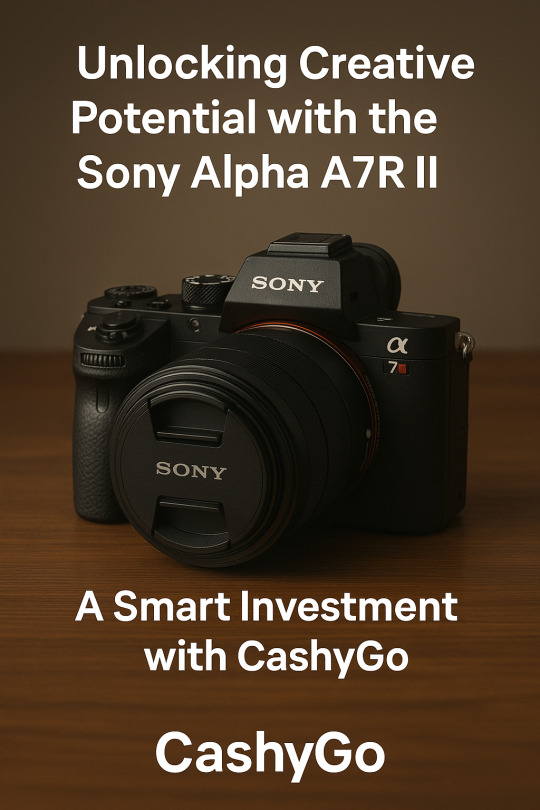
0 notes
Text
Why does the advertising industry need CNC Router with CCD?
The main reason why the advertising industry needs CNC Router with CCD(CNC engraving machine equipped with visual positioning system) is that it combines high-precision processing, automated efficiency and flexible adaptability, and can meet the core needs of the advertising industry for complex design, fast delivery and diversified materials. The following is a specific analysis:
1. High-precision visual positioning to solve the problem of material deviation
Precise alignment:Advertising materials (such as acrylic plates, metal plates, KT plates, etc.) are prone to position deviation due to cutting or placement in mass production. The CCD visual system scans the edge or mark point of the material through the camera, automatically corrects the engraving path, ensures that the position of the pattern and text is absolutely accurate, and avoids errors caused by manual adjustment.
Detail restoration:For the engraving of tiny fonts, complex LOGOs or hollow patterns, the CCD system can identify subtle deviations and compensate in real time to ensure clear and sharp lines and enhance the high-end texture of the finished advertising product.
2. Efficient and automated production, shortening the delivery cycle
Unmanned operation:Supports batch automatic loading and continuous processing to reduce manual intervention. For example, multiple plates can be loaded at one time, and the equipment automatically completes the entire process of scanning, positioning, engraving, and cutting, greatly improving production capacity.
Fast order change:Most advertising orders are small-batch customized requirements. The CCD system can quickly read different design files and automatically adjust parameters without frequent equipment calibration, significantly shortening the line change time.
3. Multi-material compatibility to meet diverse advertising needs
Wide applicability:Whether it is soft PVC foam board, fragile acrylic, or hard metal sign, CCD CNC Router can achieve high-quality processing by adjusting tool, speed and pressure parameters. The visual system can also identify material thickness differences and automatically optimize engraving depth.
Complex process integration:Supports engraving, cutting, punching, chamfering and other multi-process integration, such as making light box panels and mounting holes with three-dimensional relief at the same time, reducing the time consumption of multiple equipment switching.
4. Reduce production costs and scrap rates
Reducing material waste:Visual positioning can maximize the use of plates and reduce scraps through intelligent nesting algorithms. For example, multiple patterns can be closely arranged on special-shaped materials to reduce consumable costs.
Reduce dependence on manual labor:Traditional engraving requires skilled technicians to calibrate repeatedly, while the automated operation of the CCD system reduces the need for highly skilled workers and avoids waste caused by human errors.
5. Deal with difficult designs and improve the ability to implement creative ideas
Complex 3D engraving:The CCD system can combine 3D modeling data to achieve precise relief effects on curved surfaces or special-shaped materials, which is suitable for high-end advertising scenes such as art installations and three-dimensional logos.
Multi-color engraving:For billboards that need to be colored in layers (such as gradient LOGO), visual positioning ensures that the engraving positions of different color layers are completely aligned to avoid color misalignment affecting the visual effect.
6. Adapt to the special needs of the advertising industry
Emergency order response:For example, if the main visual of an event is temporarily replaced, CCD CNC Router can quickly import new design files and immediately put them into production to ensure that the finished product is delivered within a few hours.
Durability of outdoor advertising:Accurately control the engraving depth and cutting angle to ensure the wind resistance and waterproofness of outdoor billboards (such as the tightness of the splicing gap) and extend the service life.
Summary
CCD CNC Router solves the pain points of the advertising industry in terms of accuracy, efficiency, material adaptability and complex design through the combination of visual positioning + CNC automation technology. It not only improves the quality and consistency of advertising products, but also enhances the market competitiveness of enterprises by reducing labor costs and material waste. For the modern advertising industry that pursues rapid iteration, customized services and high-end visual effects, this type of equipment has become an indispensable core productivity tool.
1 note
·
View note